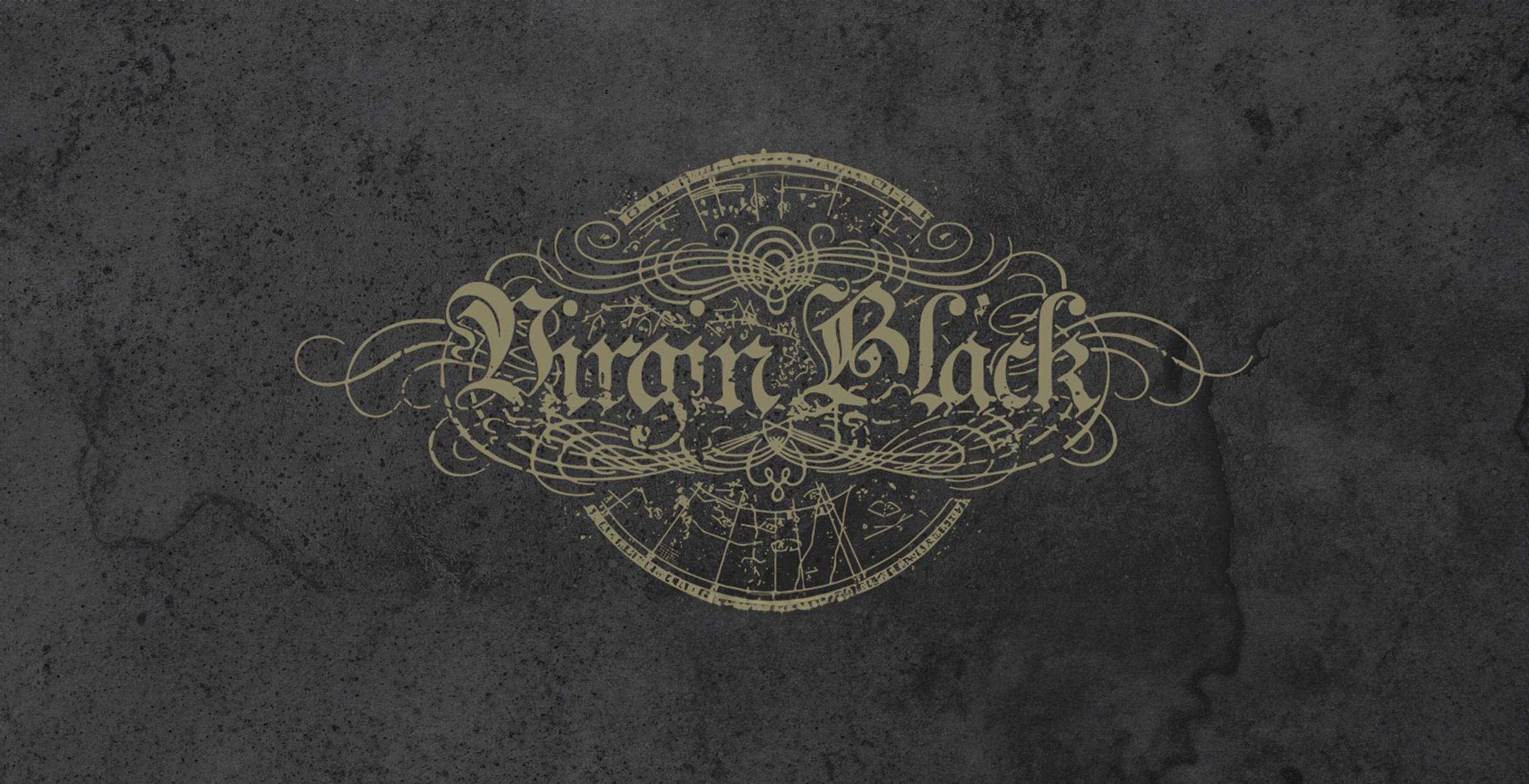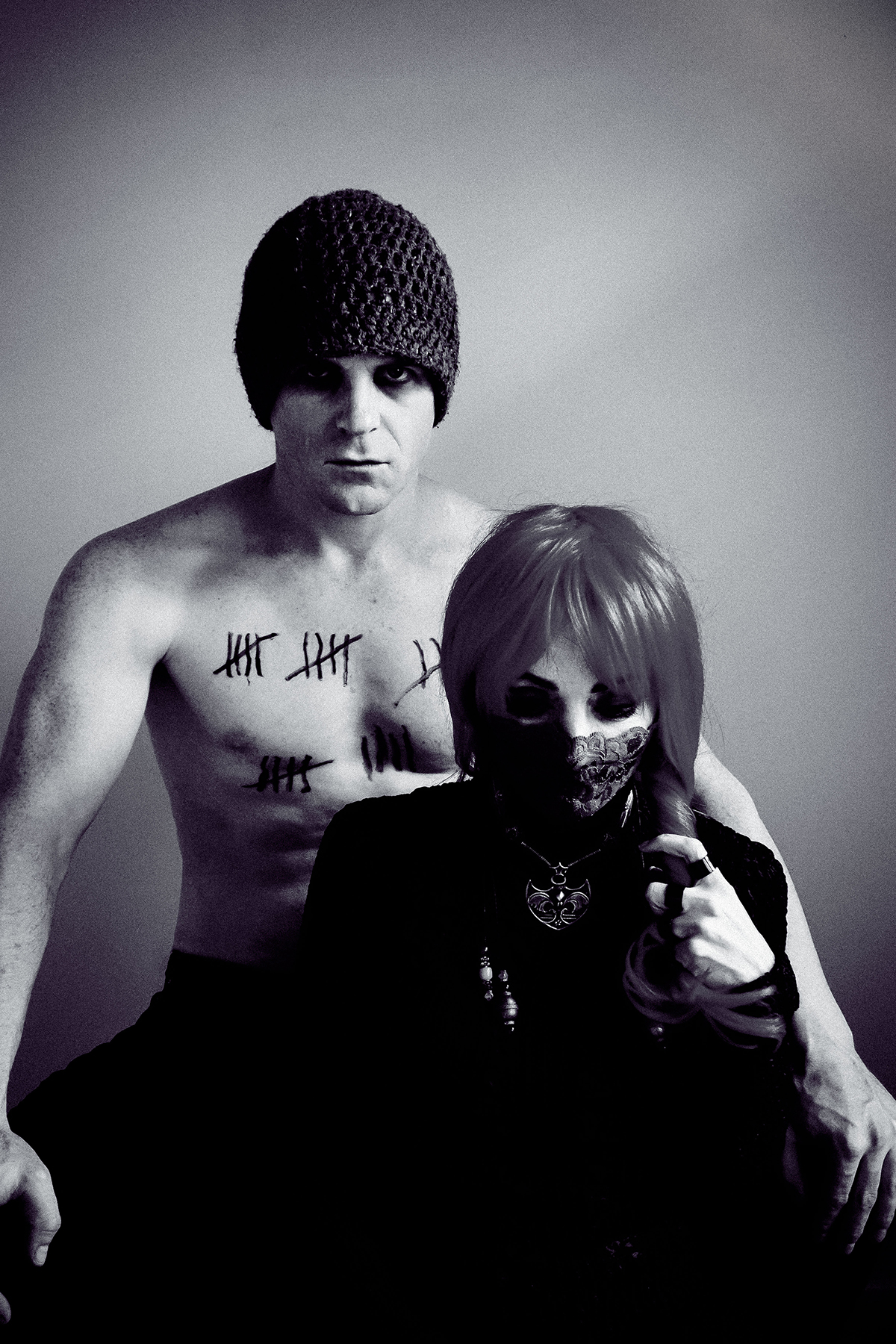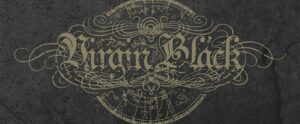Observing Virgin Black in our current-day musical climate reveals an entity that endures as uniquely intrepid. Rewind to the 1990s, and that uniqueness becomes blindingly apparent amid the vastly more rigid cultural and musical standards of the time.
The history of Virgin Black dates back to 1993 when guitarist Sesca Scaarba begun piecing together music that would both go on to form the early works of the band, and also inspire the ever ambitious and ground-breaking project that it became. By the release of 1995’s self-titled demo cassette there had been the crucial addition of fellow-composer, singer, and counterpart to the iconic duo, Rowan London. The demo laid a foundation of rich doom complimented by mournfully stirring guitar and vocal melodies.
The band would sporadically perform live, at times appearing in more commercial environments, sharing the stage with peers such as Paradise Lost and Cathedral, but also on their own in obscure back-alley venues and inner-city basements; word of mouth often the predominant gravitating force. The local Adelaide fans crammed into the tight, dank spaces auditioning songs that would ultimately be heard throughout the world, soaking in an early taste of that distinctly Virgin Black brand of darkness.
Written during that period, the band’s debut album, Sombre Romantic, was fashioned without a fleeting glance at what the long-established genres it engaged would have expected of it. An incredibly ambitious work, it thrust together doom, classical, opera, gothic and industrial elements in a way that somehow still allowed for a seamless stream of signature, cohesive darkness.
Following the release of Sombre Romantic in 2000, the band quickly became a key figure in a marked era of legendary label The End Records. It was Virgin Black, alongside equally unique and self-assured acts such as Antimatter and Agalloch that were emblematic of the label’s strong vanguard ethos. Pioneers in a time when musical categories were far more rigidly adhered to.
The follow-up album, Elegant… and Dying, reinforced the composers’ ability to balance esotericism and strong song-writing cohesion. Yet for all of the ambitiousness on display at the time, Scaarba and London were about to up the ante manyfold.
In 2006 it was announced that a three-part Requiem would be released: a requiem mass composed as one unfolding piece, progressing from the all-orchestral first stage, through to a balanced, collaborative orchestra/band middle section, concluding with the band coming to the fore in the final and heaviest section. Total duration at 2 hours 33 minutes.
Befitting “a mass for the dead”, the sounds, whether represented by orchestral or metal instrumentation, are ever-presently dirgeful and heartrending. On display is both an adherence to and an outright betrayal of the long-established tradition of requiem masses in classical music. Typifying that betrayal is the semi-atonal vocal barrage referred to as the “death choir” – a chorus of extreme voices employing a resonant undertone technique found most commonly in death metal. Musical elements such as a full string ensemble (with specifically requested low C-tuned basses), woodwinds, horns, brass, timpani, heavy A#-tuned guitars, drums, tenor/baritone and soprano solo voices, death solo voice, and full choir are at times dexterously interwoven and at other times deliberately thrust together for chaotic effect. Many passages for the words were reproduced from traditional religious mass texts and lend a ceremonial component offset by the far more personal and emotional words penned specifically for the project which interject throughout.
Six individual audio engineers were engaged to realise production, the Adelaide Symphony Orchestra enlisted to perform the scores, and the Adelaide Stamford Academy Choir for performance of choral arrangements. As per record label plans, Requiem – Mezzo Forte was released in 2007, flooring critics and fans and instantaneously positioning itself as what many would still argue is the pinnacle of what is possible in marrying metal and classical. Following on, and more so than most would have expected Requiem – Fortissimo didn’t shy away from the commitment to the extreme heaviness that was touted. Released in 2008 it further expanded the breadth of the project to the listener and teased as to what its opposite extreme, Pianissimo, might offer in that regard.
The band toured Europe and North America in support of the two released Requiem albums in 2007 and 2008 respectively and then at the peak of its powers disappeared. As years ticked by, even the most ardent fans had their hopes for the missing album’s release evaporate. The online world is littered with comments and editorials signifying a final sigh of dismay as people let go of the belief that Pianissimo would ever actually come to bear.
Twelve years had passed since Requiem was recorded, when, in August 2018, the Virgin Black Facebook page suddenly had all of its content deleted, with a single ambiguous image left instead. That, and the series of chronologically dated images that followed, left fans divided on whether or not they were witnessing a return to life after the massive hiatus, or a final memorial. Fans feverishly debated, but when the date jumped to 2018 with a new image of Scaarba and London, followed by a shock posting of the first 13 minutes of the fabled album, it was essentially unanimous that Requiem – Pianissimo was real, and imminent.
With Requiem now complete the path is clear to look toward to future prospects while concurrently reflecting on a band and a catalogue that has long-defied the constraints that so often inhibit artists.






